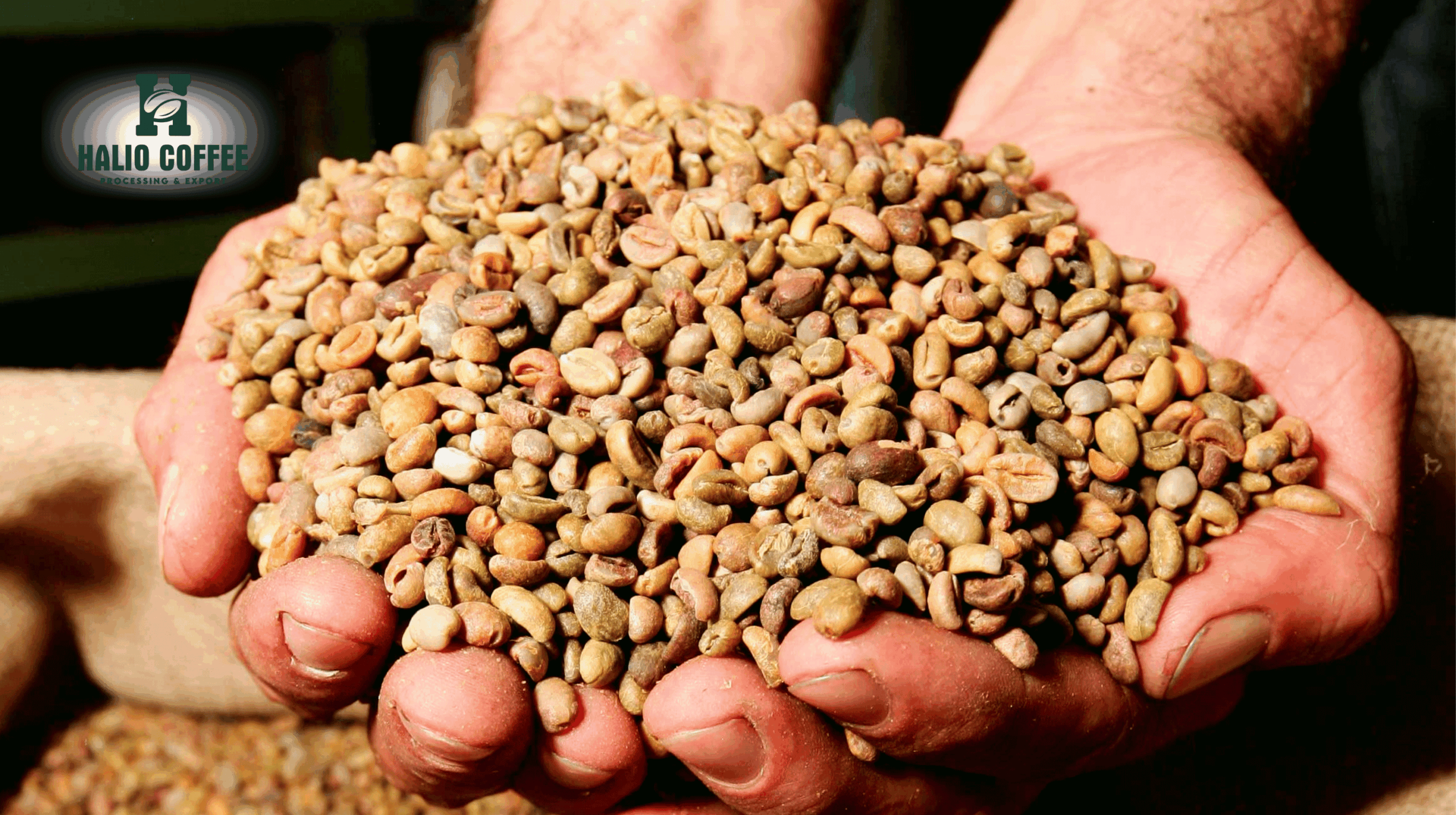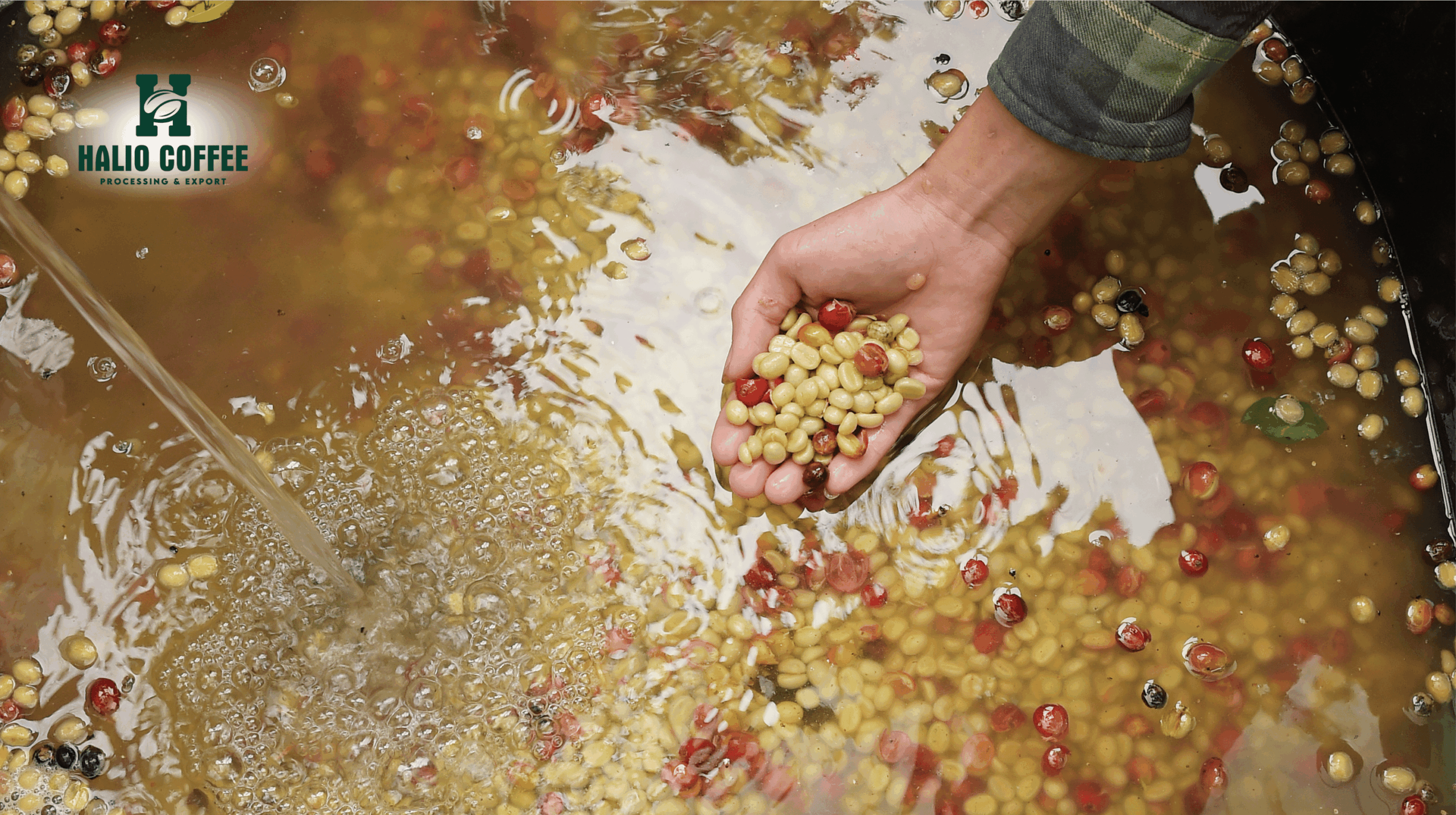High Caffeine Coffee Bean Supplier
Alright, let’s dive into a comprehensive analysis of “High Caffeine Coffee Bean Supplier,” with a special focus on the current context in Buon Ma Thuot, Dak Lak, Vietnam.
1. Defining “High Caffeine Coffee Beans”
When we talk about “high caffeine coffee beans,” we are primarily referring to Robusta coffee beans. While there are some rare Arabica varieties with relatively high caffeine content, Robusta remains the top and most common choice for the following reasons:
- Naturally High Caffeine Content: Robusta beans naturally contain between 2.5% and 4.5% caffeine by weight, significantly higher than Arabica beans (which contain only about 1.5%). This is an inherent genetic characteristic of the Robusta plant, serving as a self-defense mechanism against pests.
- Flavor Profile: Robusta is known for its strong, bold, slightly bitter, and low-acidity flavor. These characteristics often go hand-in-hand with its high caffeine content, delivering a truly “energizing” coffee experience.
- Cost-Effectiveness: Robusta is easier to grow, yields higher harvests, and is less demanding in terms of soil and climate conditions than Arabica, leading to lower production costs. This enables suppliers to offer high-caffeine beans at competitive prices.
Therefore, a “High Caffeine Coffee Bean Supplier” is primarily a supplier of high-quality Robusta coffee beans.
2. Role of a High Caffeine Coffee Bean Supplier

These suppliers play an essential role in meeting specific market demands:
- Specialized Sourcing: They focus on procuring batches of Robusta beans that meet high-quality standards and deliver the desired caffeine content, often from renowned Robusta-growing regions.
- Quality Control and Analysis: To ensure they meet “high caffeine” standards, reputable suppliers may conduct laboratory analyses to accurately measure the caffeine content of each batch. Additionally, they must control other green bean quality factors (moisture, defects, size).
- Supply Chain Management: Ensuring beans are processed, stored, and transported correctly to maintain their quality and caffeine content.
- Customer Consultation: Providing detailed information on flavor profiles, estimated caffeine content, and suitable applications for their Robusta beans.
- Meeting Specific Requirements: Some customers may request Robusta from specific regions or with certain certifications (organic, sustainable).
See more:
- Robusta Coffee Beans from Vietnam: A Global Powerhouse in the Coffee Supply Chain
- Fresh Robusta Coffee Beans Supplier: Elevating Vietnam’s Specialty Robusta to Global Markets
- Halio Coffee – Your Trusted Fresh Coffee Distributor of Robusta & Arabica Beans
3. Key Factors for a High Caffeine Coffee Bean Supplier to Focus On
To become a reputable supplier, the following factors are crucial:
- Origin and Varietal:
- Growing Region: Robusta quality can vary between regions. Suppliers need to know the exact origin of the beans (e.g., Robusta from Dak Lak versus Gia Lai might have different characteristics).
- Robusta Varietals: Some Robusta varieties might offer better caffeine content and flavor.
- Green Bean Quality:
- Defect Rate: Beans must be clean and have minimal defects to ensure the final flavor is not compromised.
- Moisture Content: Ideally between 11% and 12.5% for proper storage and roasting.
- Color and Freshness: Beans should have a uniform, bright green color and appear fresh.
- Processing Method:
- Natural/Dry Process: Common for Robusta. It’s crucial that the drying process is clean and doesn’t introduce off-flavors.
- Washed/Pulped Natural Process: If available, this indicates an investment in quality, potentially leading to cleaner and more refined Robusta.
- Caffeine Content Analysis: The ability to provide reliable laboratory analysis results for caffeine content will be a significant competitive advantage.
- Certifications and Sustainability: Certifications like Organic, Fair Trade, Rainforest Alliance, 4C, and UTZ Certified not only enhance the value of Robusta beans but also expand market access, especially with new regulations like the EUDR.
- Traceability: Increasingly necessary to prove the origin and production process.
- Supply Capacity and Logistics: The ability to provide a stable, on-time supply and experience in international export.
4. Vietnam’s Context and the Role of High Caffeine Robusta Bean Suppliers
As the world’s largest Robusta producer, Vietnam is a leading source of high-caffeine beans. Notably, Buon Ma Thuot, Dak Lak, is the heart of this activity.
Advantages for suppliers from Vietnam:
- Abundant Supply: Vietnam boasts the world’s largest Robusta production, ensuring a stable supply for large-volume orders.
- Naturally High Caffeine Content: Vietnamese Robusta is renowned for its characteristic caffeine content, precisely meeting the needs of this market segment.
- Quality Diversity: From commercial-grade Robusta to premium and specialty varieties, Vietnamese suppliers can meet various quality and price demands.
- Competitive Pricing: Although global Robusta prices are currently high, compared to Arabica, Vietnamese Robusta still maintains a production cost advantage, helping it remain competitive.
- Quality Improvement: Vietnam’s coffee industry is making significant strides in improving Robusta quality through farmer support programs, adoption of sustainable farming techniques, and more advanced processing methods (such as selective picking, washed/honey processing). This creates a supply of high-caffeine Robusta that is also cleaner and has fewer defects.
- Market Access: Major Vietnamese exporters already have extensive global distribution networks.
Challenges for suppliers in Vietnam:
- Price and Production Volatility: Robusta coffee prices depend on the global market and are heavily influenced by weather (the recent drought in Vietnam’s dry season has raised concerns about the 2024-2025 crop yield). This requires suppliers to have robust risk management and forecasting strategies.
- Meeting Sustainability and Traceability Standards: Major import markets (especially the EU with EUDR effective December 2024) are increasingly demanding high standards for sustainability and clear traceability. Ensuring full compliance with these regulations is a significant challenge for the Vietnamese coffee industry, particularly given its fragmented production structure.
- Increasing Added Value: Although high-quality Robusta is exported, the proportion of deeply processed coffee (roasted, instant) is still low compared to green bean exports. Suppliers might consider expanding into value-added services.
5. Target Customers for High Caffeine Coffee Bean Suppliers
- Instant Coffee Manufacturers: As the largest customers, since Robusta has a high soluble solids content, it’s optimal for this process.
- Coffee Roasters:
- Espresso Blend Production: To create thick crema, a strong body, and a high “kick” for espresso.
- Bold Coffee Products: For consumers who prefer strong coffee.
- Cost Control: Blending Robusta with Arabica to balance the final product’s cost.
- Food/Beverage Companies: Using caffeine as an ingredient for energy drinks or functional foods.
- Green Coffee Importers/Distributors: Purchasing in bulk to supply their local markets.
Conclusion
High caffeine coffee bean suppliers primarily focus on Robusta beans, where Vietnam holds a leading global position. With abundant production, naturally high caffeine content, and continuous efforts to improve quality, suppliers in Vietnam, particularly from Buon Ma Thuot, Dak Lak, have a significant competitive advantage in meeting the growing demands of the international market. However, to maintain this position, they must continue to invest in green bean quality, traceability, and adherence to international sustainability standards, while closely monitoring market and climate fluctuations.
- A Consultant’s Guide to Minimizing Transit Risks for Green Coffee
- Coffee Prices Today, September 10: Stronger U.S. Dollar Puts Pressure on Coffee Markets
- Coffee Prices Today, October 7th: Quiet Trading as Market Awaits US-Brazil Tariff Talks
- High Altitude Arabica Coffee Beans: Unlocking Superior Quality from Vietnam’s Highlands
- The Robusta Epicenter: A Buyer’s Guide to Vetting Buon Ma Thuot Robusta Coffee Suppliers







